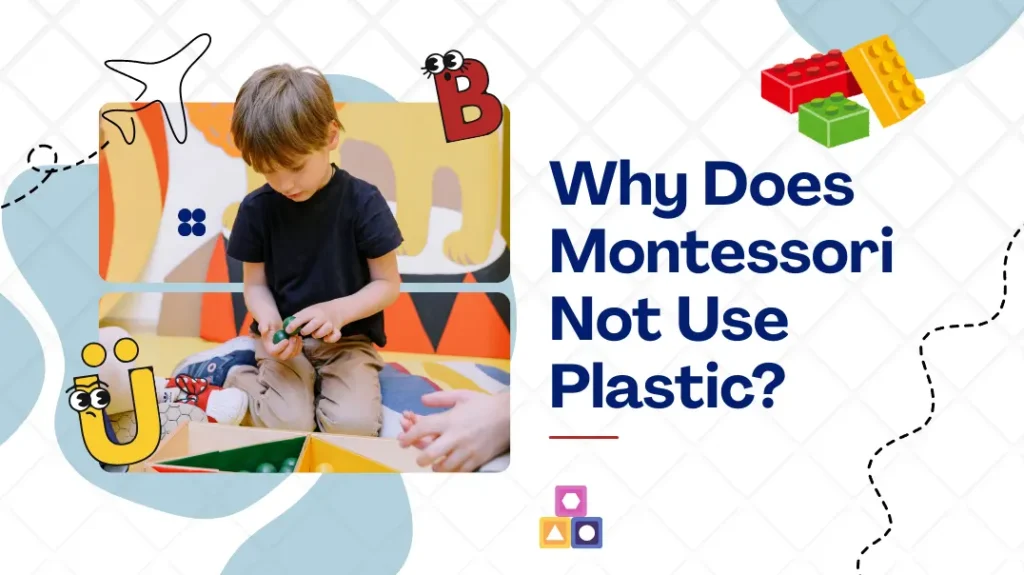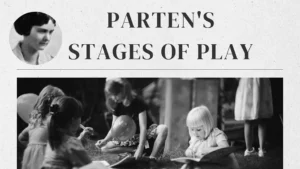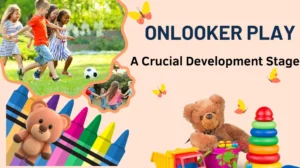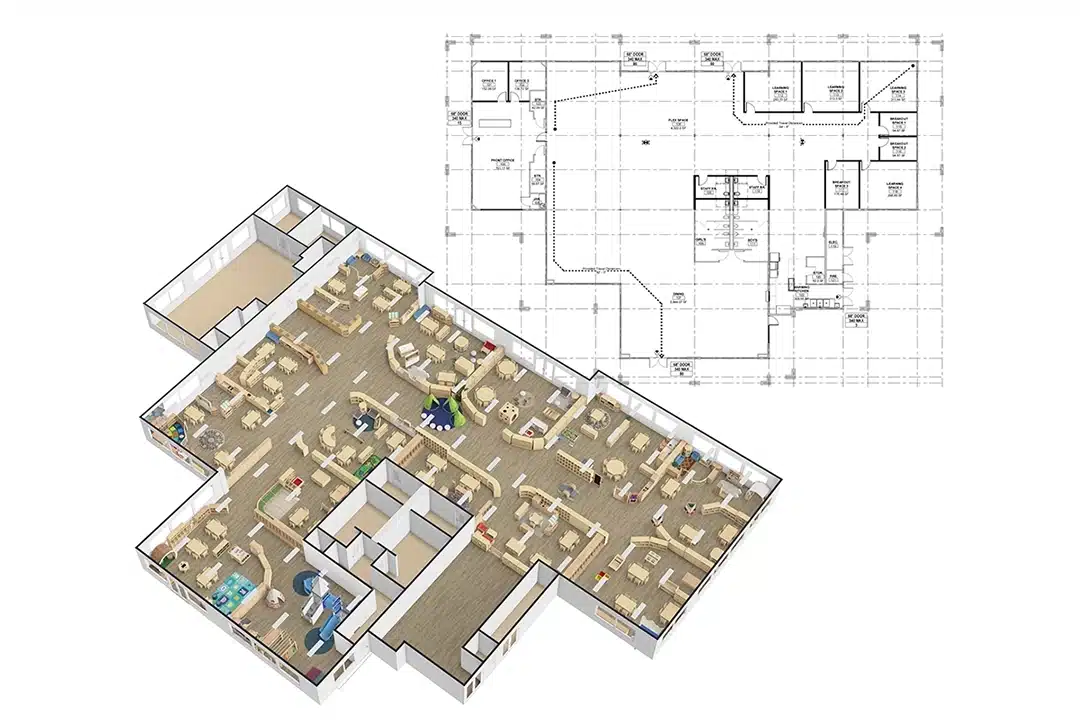Walk into an authentic Montessori classroom and you will spot it straight away: almost nothing is made of plastic. Shelves are lined with smooth wooden blocks, brass containers, glass pitchers, woven baskets, and cotton rugs. Parents look around and quietly ask themselves, “Why Does Montessori Not Use Plastic?” This is not based on decorative trends or fashion considerations, but rather on a well-researched educational philosophy that integrates psychology, sensory development, and environmental ethics.
But what’s so bad about plastic, anyway? It’s cheap, durable, and colorful — all the things that seem great for kids, right?
Montessori avoids plastic because natural materials give truthful sensory feedback, connect children to nature, encourage care and responsibility, reduce chemical exposure, and build a calm, beautiful atmosphere where concentration can grow. Plastic, by contrast, tends to feel the same no matter what it imitates, ages poorly, and can carry health and environmental costs. At the same time, Montessori is not a purity contest. Some plastic items still appear when they genuinely serve the child better than a natural alternative.
Let’s explore the real reasons why the Montessori method tends to avoid the use of plastic, and why this choice may be wiser than it initially seems.
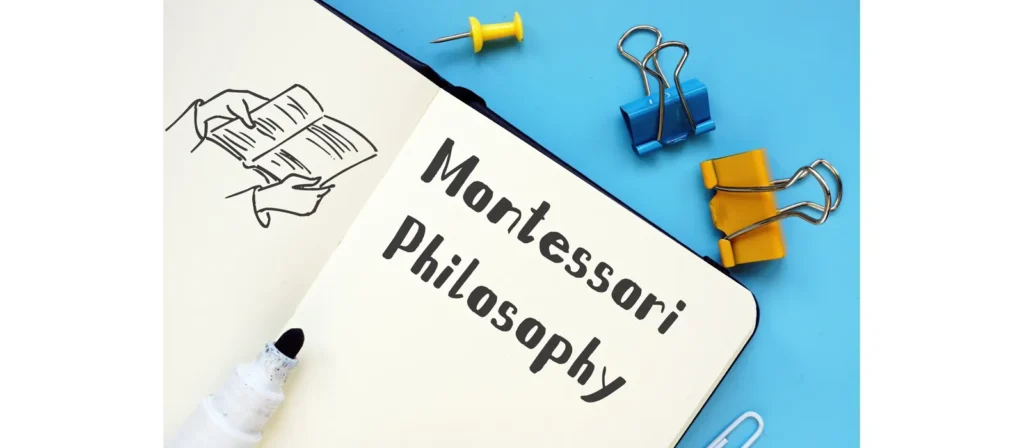
The Philosophy Behind Montessori Materials
To understand Why Does Montessori Not Use Plastic, it helps to remember what Montessori is optimising, and what it is willing to sacrifice. Maria Montessori was a doctor who spent years observing children in hospitals and schools. She noticed that when children were offered real tools and real materials, sized to their bodies but not watered down, a new kind of concentration appeared. Children began to choose purposeful work, repeat it, and lose track of time in deep focus. She called this phenomenon “normalisation”: the child becoming their best, most grounded self.
Everything in a Montessori environment is designed to support that state of deep, voluntary concentration. The method is built around the “prepared environment”.
In this philosophy, the choice of materials is not a decorative accessory. The properties of natural materials such as wood, metal, glass, stone, and cotton truthfully reflect the characteristics of the material world. Plastic undermines this philosophy. It imitates other materials but lacks their properties. If we want to give children the “key to unlock the world,” then the question of “why doesn’t Montessori education use plastic” becomes a practical one: why give them a key that can only open imaginary doors?
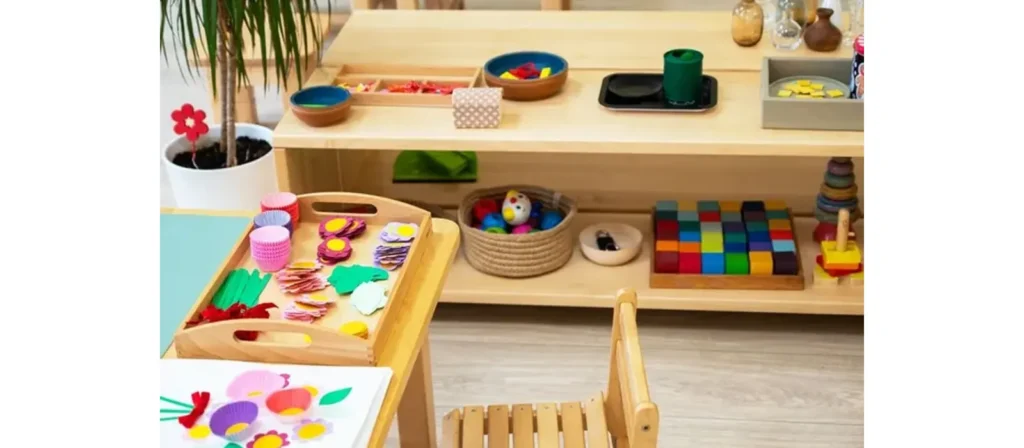
7 Key Reasons Montessori Avoids Plastic
Below are the main reasons why the Montessori community generally avoids plastics and chooses natural materials.
1. Truthful Sensory Information
Montessori places enormous value on the senses. There are whole shelves of materials devoted just to grading rough and smooth boards, matching tiny scent bottles, or pairing sounds from hidden cylinders. When a material is real, the child can trust what their senses tell them.
With natural materials, temperature, weight, texture, and even smell match what the object is supposed to be. A brass bell is heavy and cool; its ring carries a clear tone. A wooden cylinder block has visible grain and subtle warmth. A glass tumbler shines differently in morning light than in the afternoon. These qualities are not cosmetic; they are data.
Plastic flattens that data. It tends to be light, uniformly smooth, and almost always the same mild temperature. A plastic “wooden” block can be hollow yet look solid. A plastic fruit set all smells and feels the same, even if the colours differ. When children handle mostly plastic, their brain receives blurred signals, as if someone has turned down the resolution on the world. The repeated choice in Montessori to avoid that blur is one pillar of Why Does Montessori Not Use Plastic.
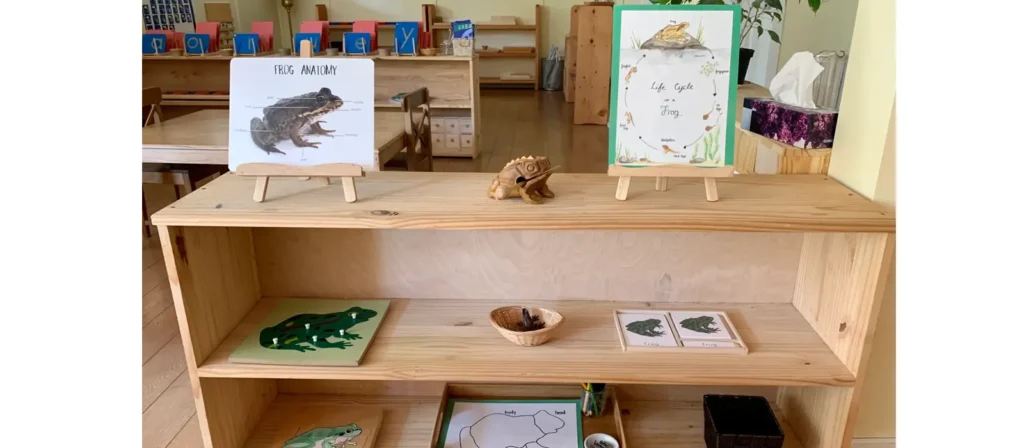
2. Connection to Nature and the Real World
Montessori classrooms are intentionally filled with reminders that we live on a living planet. There are plants to water, leaves to polish, rocks to sort, real shells to name, and landform trays that show how islands, lakes, peninsulas, and gulfs look from above.
Natural materials fit this mission beautifully. Teachers can say, “This table is made from beech; this basket is woven from a plant called rattan; this cloth is cotton that grew in a field.” The children began to realize that everything has its origin.
3. Aesthetic, Calm, and Focused Environment
Montessori emphasizes a “prepared environment.” A quiet, orderly space with non-glaring visuals and realistic tactile feedback. Such a space helps children learn and explore with focus, autonomy, and tranquility.
- Natural materials possess a warmer, softer texture, color, and luster, unlike the bright colors, flashy designs, and visual stimulation of plastic toys that can easily distract children.
- Materials like wood, cloth, and bamboo baskets offer a greater sense of tranquility and order in terms of touch, stability, and visual appeal, providing children with a sense of security and dignity. This aligns with Montessori’s educational aesthetics and the philosophy of “life as learning.”
- Teaching aids and environments with authentic textures allow children to more naturally and genuinely experience a connection between themselves and the space and objects, rather than a virtual, artificial, or toy-like relationship.
Plastic tends to pull attention to itself. Its colours are often very saturated; its surfaces are ultra-smooth and reflective. Therefore, part of the reason Montessori avoids plastic is for visual hygiene. Fewer glaring colors and shiny surfaces allow children to focus more easily on hand movements rather than constantly seeking the next stimulus.
In short, natural materials contribute to creating a warm, reliable, orderly, and authentic learning space—precisely what Montessori aims to provide for children.

4. Teaching Responsibility
One of the most striking things for visitors is seeing young children carry a real glass or ceramic dish across the room, or use a child-sized metal grater to prepare a snack. Montessori trusts children with real tools. That trust changes how the child sees themselves.
When children know an item can break, they instinctively handle it with more care. This is a central idea in Montessori: the environment teaches through consequences, not punishments. A broken cup isn’t a failure; it’s a learning moment. It teaches gentleness, focus, and respect for materials.
Plastic removes that learning opportunity. It bounces when dropped and resists damage. While that may sound like a perk, it dulls a child’s natural caution and sense of responsibility. A world where nothing can be damaged teaches, subtly, that nothing is worth much care.
5. Durability and Sustainability
Visit a long-established Montessori school and you will likely find materials that have been in continuous use for twenty or thirty years. Montessori materials such as the pink tower, brown staircase, and gold beads are famous not only for what they teach, but also for their enduring appeal. They are made of solid wood or metal, with careful craftsmanship and repairable finishes.
Plastic often offers the illusion of durability. It does not shatter like glass, but it cracks, warps, and discolours. Tiny scratches cloud the surface; colours fade unevenly in sunlight. Eventually the item looks shabby and is thrown away.
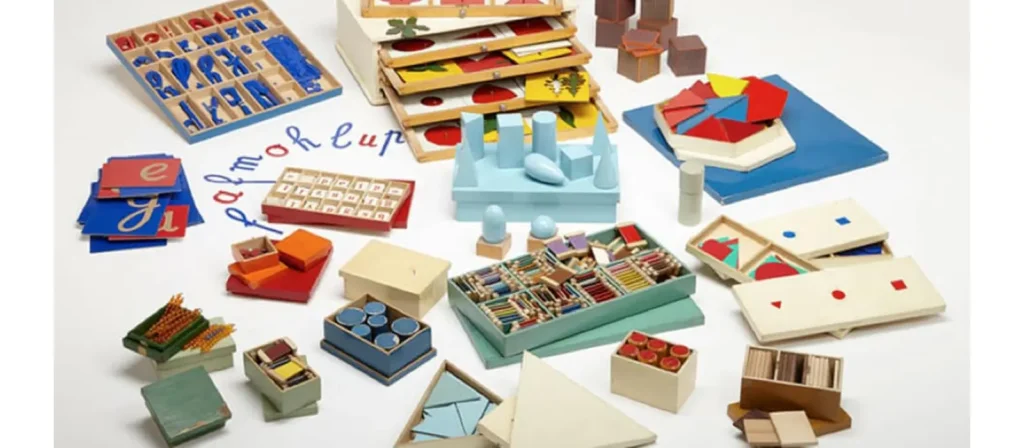
6. Safety & Health Considerations
Infants and preschool children may put toys in their mouths, touch them and then rub their eyes, or lick them. They are particularly sensitive to the safety of the materials used.
- Natural or traditional materials such as wood, glass, metal, and ceramics are usually treated with non-toxic water-based paints or natural oils, with less chemical processing, making them easier to ensure harmlessness and suitable for children to touch and handle frequently.
- Plastics may contain phthalates, volatile organic compounds, and harmful additives. Some studies suggest that PVC children’s toys may contain phthalates and other harmful chemicals.
- Broken or cracked plastic toys can easily create sharp edges that can cut children. Poor-quality plastic toys also tend to shed small fragments, posing a risk of swallowing or choking.
7. Environmental & Ethical Responsibility
Montessori education nurtures academic excellence while fostering strong moral and environmental awareness. The deliberate avoidance of plastic supports a broader goal: teaching children to care for the earth.
Plastic pollution is one of the most pressing environmental issues today. It clogs oceans, harms wildlife, and takes centuries to degrade. By excluding plastic from their daily environment, Montessori students learn by example. They see that it’s possible — and preferable — to choose sustainable alternatives.
This instills a foundational sense of ecological responsibility, long before these children can understand the science of climate change. It becomes a natural part of their worldview, helping to shape the next generation of environmentally conscious citizens.
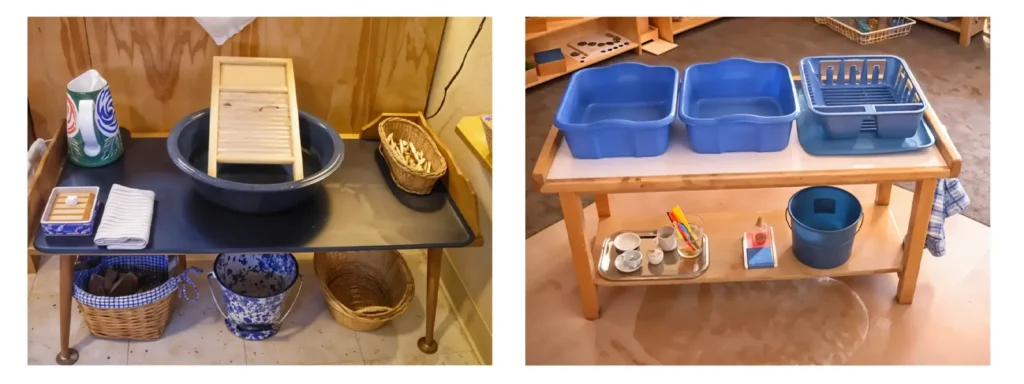
Is Montessori Ever Okay with Plastic?
While most Montessori schools and practitioners prefer natural materials, some argue that not all plastics are inherently “non-Montessori,” and that environmental factors such as resources, budget, or location influence material choices.
- Some believe that plastic toys can be appropriate in a Montessori-inspired environment as long as they are clean, safe, non-toxic, and designed with intention. If they avoid flashing lights, loud noises, or overly stimulating features, and support focus and purpose-driven play, they may still serve a Montessori-aligned function. As one Montessori parent shared on Reddit:
“Wood feels good and is probably safer for teething, but plastic isn’t automatically bad. If it’s safe, visually simple, and helps the child focus… then it might be fine.” - In some cases, families or schools with limited budgets or fewer resources may choose plastic or hybrid materials simply because they are more affordable and accessible. One commentator pointed out that “plastic makes Montessori more accessible,” especially to those unable to afford handcrafted or imported wooden materials.
- Another perspective argues that the true spirit of Montessori lies not only in the materials themselves, but also in the methods, respect for children, and fostering their independence. If a toy is made of plastic but still adheres to Montessori principles, it can still be considered “Montessori-compatible.” The key lies in how educators or parents use the item, not just its material.
What Does Montessori Use Instead of Plastic?
So, if Montessori avoids plastic, what takes its place?
- Wood: Used for puzzles, building materials, furniture, trays, and math manipulatives. It’s durable, tactile, and beautiful.
- Glass: Bowls, pitchers, vases. Breakable on purpose — to teach care.
- Metal: Tools, geometric solids, insets. Offers weight and precision.
- Natural fibers: Cotton, wool, linen — for cleaning cloths, aprons, rugs.
- Ceramics and clay: For art, pouring, sensory play — all breakable, tactile, real.
These materials aren’t just substitutes; they’re upgrades. They provide deeper learning, richer sensory input, and a more meaningful connection to the world.
FAQs
- Isn’t plastic safer because it doesn’t break?
Not necessarily. While breakability requires supervision, it also teaches responsibility. Children learn to handle fragile items with care. - Can’t Montessori methods be adapted to include some plastic?
While some homes might use minimal plastic due to constraints, authentic Montessori environments intentionally avoid it to preserve the integrity of learning. - Isn’t plastic more affordable for schools and parents?
Short-term, yes. Long-term, high-quality natural materials last longer and offer better developmental benefits, making them more cost-effective over time. - How do children respond to breakable materials?
They rise to the challenge. Most children become more careful, attentive, and respectful when trusted with real, fragile tools. - What if a child has special needs — is plastic acceptable then?
Montessori can be adapted to each child, but the core principle remains: offering the child real, respectful tools that aid their development, with safety considered individually. - Is it okay to use some plastic at home if I follow Montessori principles?
Yes, it’s okay. Perfection isn’t the goal. Just try to prioritize natural materials where it matters most, like in practical life activities and sensory play. - Are there any plastic items that are acceptable in Montessori?
Some Montessori environments may use limited plastic items for hygiene or practicality, like plastic trays or buckets. The key is thoughtful, minimal use. - Do I have to throw away every plastic toy to follow Montessori?
A: No. The aim behind Why Does Montessori Not Use Plastic is to be thoughtful, not perfect. Start by reducing noisy, distracting plastic toys and gradually introduce more natural materials, especially for everyday work and calm, focused play. - How can I transition from plastic to natural materials at home?
Start small: swap a few key items like dishes, utensils, or toys for wooden or metal versions. Gradually build a more natural, Montessori-inspired space. - Montessori toys don’t have sounds or lights — won’t children find them boring?
Quite the opposite. Montessori emphasizes the development of intrinsic interest, not external stimulation. Without the distraction of electronic sounds and flashing lights, children can focus more deeply on the activity itself. This leads to greater satisfaction, a sense of accomplishment, and gradually fosters independent learning. - Why doesn’t Montessori use brightly colored plastic toys to attract children’s attention?
Montessori education believes the environment should be calm and orderly to help children focus. Toys that are overly bright or flashy can lead to sensory overload, which actually hinders concentration and meaningful engagement.
Conclusion
The Montessori approach to avoiding plastic isn’t about snobbery or aesthetics — it’s a deeply intentional choice grounded in philosophy, development, and environmental responsibility. From promoting sensory engagement to teaching responsibility and sustainability, the materials Montessori classrooms use are designed to shape the whole child.
Ultimately, skipping plastic isn’t about making life harder — it’s about offering children something better. Real tools, real experiences, real beauty. In a world full of convenience and disposability, Montessori dares to slow down, to connect, and to teach children to value what’s real.
So next time you wonder why there’s no plastic in that calm, wooden-furnished classroom, you’ll know, it’s not an oversight. It’s the method in the Montessori magic.
References
- Global Montessori Network. Why Are Montessori Materials Made of Natural Materials?
https://theglobalmontessorinetwork.org/resource/parents/why-are-montessori-materials-made-of-natural-materials-english/ - Marshall, C. (2017). Montessori education: a review of the evidence base.
Frontiers in Psychology.
https://pmc.ncbi.nlm.nih.gov/articles/PMC6161506/ PMC - Kirchnawy, C., Hager, F., Osorio Piniella, V., et al. (2020). Potential endocrine disrupting properties of toys for babies and infants.
PLOS ONE.
https://journals.plos.org/plosone/article?id=10.1371/journal.pone.0231171 PLOS - SciTechDaily. Scientists Discover Worrying Levels of Toxic Elements in Plastic Toys. (Nov 16, 2025).
https://scitechdaily.com/scientists-discover-worrying-levels-of-toxic-elements-in-plastic-toys/ SciTechDaily - ScienceDaily. Toxic Metals Hidden in Plastic Toys. (Nov 28, 2025).
https://www.sciencedaily.com/releases/2025/11/251128050532.htm ScienceDaily - Cai, W., et al. (2025). Screening and prioritization of endocrine-disrupting chemicals in plastic toys.
Environment International (in press).
https://www.sciencedirect.com/science/article/pii/S0160412025006294 ScienceDirect

